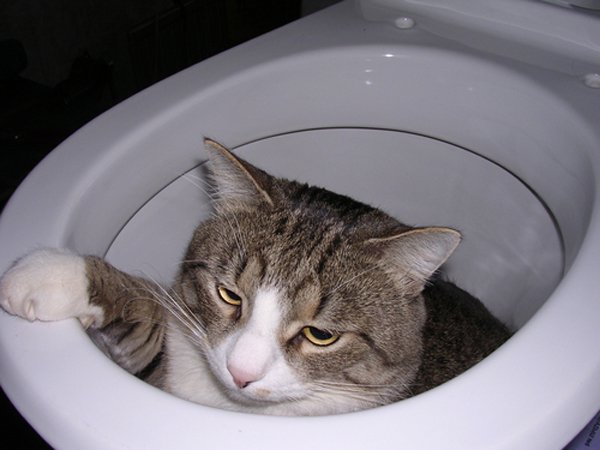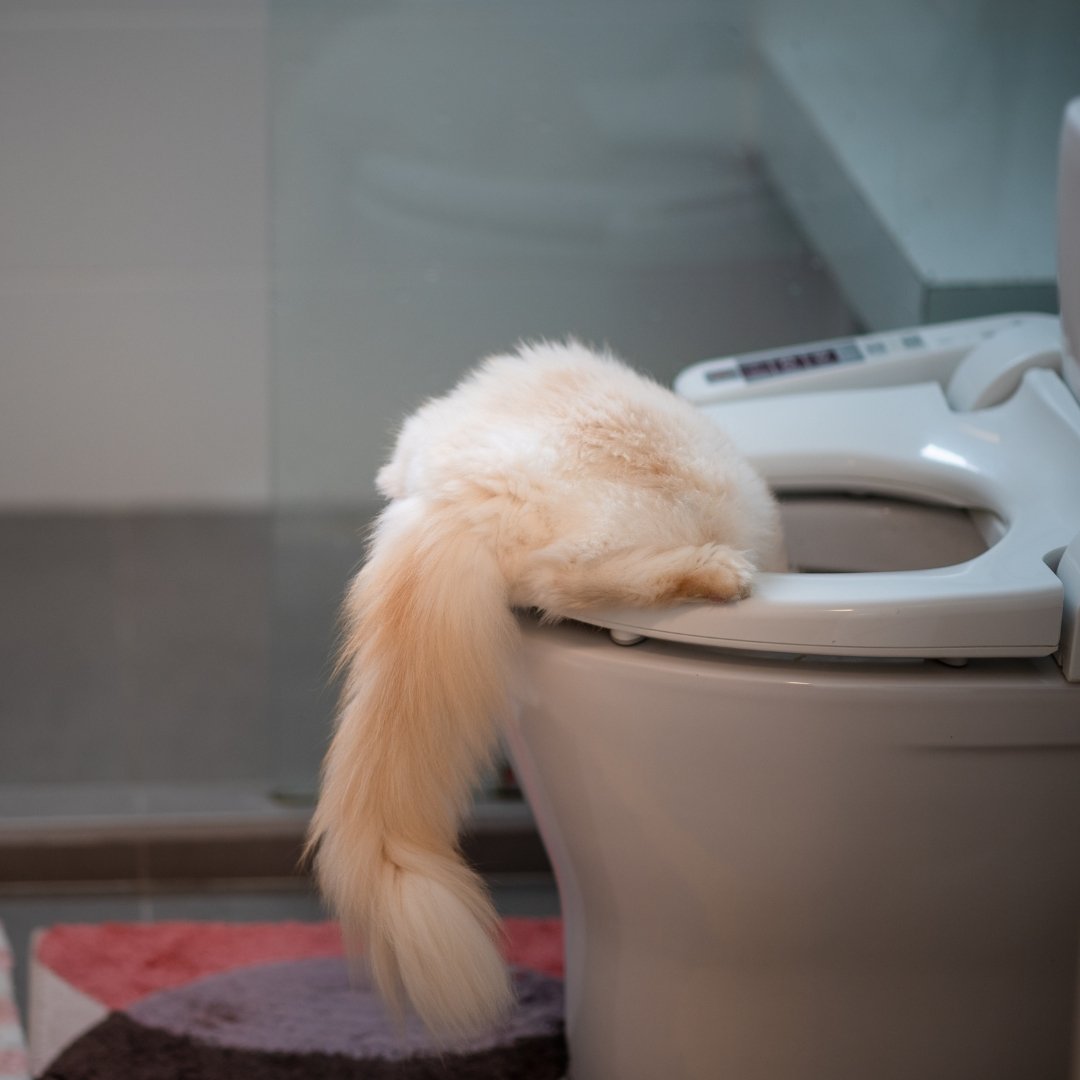What You Ought to Avoid Flushing Animal Waste Down the Toilet
What You Ought to Avoid Flushing Animal Waste Down the Toilet
Blog Article
They are making a number of good observations on the subject of Don't Flush Your Pets Poo Down The Loo, Vet Warns as a whole in this great article on the next paragraphs.

When it concerns dealing with waste, especially animal waste, lots of people often turn to the hassle-free option of flushing it down the commode. However, this seemingly simple remedy can have serious consequences for the atmosphere and public health. In this article, we'll check out why flushing animal waste down the bathroom is a poor idea and offer alternative methods for proper disposal.
Introduction
Appropriate waste disposal is important for preserving environmental sustainability and public health. While it may seem harmless to purge animal waste down the bathroom, it can cause different issues, both for the setting and human health.
Dangers of flushing animal waste
Ecological effect
Flushing pet waste presents damaging bacteria and microorganisms into rivers, which can negatively influence water ecosystems. These pathogens can contaminate water sources and damage aquatic life, interfering with delicate ecosystems.
Public health worries
Animal waste consists of unsafe germs such as E. coli and Salmonella, which can present significant health risks to humans. Flushing animal waste down the toilet can pollute water materials, causing the spread of illness and infections.
Alternatives to flushing
Rather than flushing animal waste down the commode, there are numerous alternate disposal techniques that are more eco-friendly and sanitary.
Composting
Composting animal waste is an environment-friendly method to get rid of it. By composting, organic matter is broken down right into nutrient-rich soil, which can be used to feed gardens and plants.
Land fill disposal
Throwing away animal waste in a land fill is another option. While not as eco-friendly as composting, it is a safer option to flushing, as it prevents the contamination of water sources.
Pet dog waste disposal systems
There are click here specific pet dog waste disposal systems offered that securely and hygienically get rid of pet waste. These systems frequently utilize enzymes to break down waste and remove smells.
Steps to proper animal waste disposal
To make sure correct disposal of animal waste, comply with these actions:
Scooping and bagging waste
Regularly scoop and bag pet waste making use of biodegradable bags. This avoids waste from contaminating the setting.
Using marked waste bins
Dispose of bagged animal waste in assigned waste bins, such as garden compost containers or landfill containers. Avoid flushing it down the toilet whatsoever costs.
Cleaning up litter boxes and pet locations regularly
Routinely tidy litter boxes and pet areas to prevent the buildup of waste and bacteria. Usage pet-safe cleaning items to maintain health.
Benefits of appropriate disposal approaches
Adopting correct disposal techniques for pet waste offers a number of advantages:
Decreased environmental pollution
Appropriate disposal approaches reduce the threat of environmental pollution, safeguarding waterways and environments from contamination
Minimized risk of water contamination.
By avoiding flushing animal waste down the commode, the threat of water contamination is significantly decreased, securing public health.
Enhanced hygiene and hygiene
Correct disposal approaches promote better sanitation and health, developing a much safer environment for both humans and pets.
Verdict
Finally, flushing animal waste down the toilet is hazardous to the setting and public health. By adopting different disposal methods and adhering to appropriate waste management practices, we can reduce the adverse influence of animal waste and contribute to a cleaner, much healthier earth.
What To Do With Dog Poo – The Do's And Don'ts Of Disposing Of Faeces
Dog poo bins
Some councils provide dedicated dog waste bins in popular dog-walking areas that can take dog poo that has been bagged but you can legally dispose of dog waste in any public litter bin, as long as it is securely bagged. This also applies to your wheelie bin at home.
Do not flush
Water companies do not recommend flushing dog faeces down the toilet because certain parasites can survive the water processing treatment and are potentially harmful to humans. You should also never consider flushing dog poo that has been bagged down the toilet as the bags will not break down and instead create severe blockages in the sewage system.
In the woods
The Forestry Commission promotes a ‘stick and flick’ method for dealing with waste in the woods. This means finding a stick and using it to flick any poo from off the path so that it is out of the way of other walkers. You could also bury it as long as it is not in an area where there might be livestock.
Livestock
Parasites found in dog poo can be transmitted to livestock if they inadvertently eat infected faeces that has been left on grazing land. This could result in the death of sheep or abortion in cattle so you should always make sure you pick up your dog’s waste in fields where livestock could be present.

Routinely tidy litter boxes and pet areas to prevent the buildup of waste and bacteria. Usage pet-safe cleaning items to maintain health.
Benefits of appropriate disposal approaches
Adopting correct disposal techniques for pet waste offers a number of advantages:
Decreased environmental pollution
Appropriate disposal approaches reduce the threat of environmental pollution, safeguarding waterways and environments from contamination
Minimized risk of water contamination.
By avoiding flushing animal waste down the commode, the threat of water contamination is significantly decreased, securing public health.
Enhanced hygiene and hygiene
Correct disposal approaches promote better sanitation and health, developing a much safer environment for both humans and pets.
Verdict
Finally, flushing animal waste down the toilet is hazardous to the setting and public health. By adopting different disposal methods and adhering to appropriate waste management practices, we can reduce the adverse influence of animal waste and contribute to a cleaner, much healthier earth.
What To Do With Dog Poo – The Do's And Don'ts Of Disposing Of Faeces
Dog poo bins
Some councils provide dedicated dog waste bins in popular dog-walking areas that can take dog poo that has been bagged but you can legally dispose of dog waste in any public litter bin, as long as it is securely bagged. This also applies to your wheelie bin at home.
Do not flush
Water companies do not recommend flushing dog faeces down the toilet because certain parasites can survive the water processing treatment and are potentially harmful to humans. You should also never consider flushing dog poo that has been bagged down the toilet as the bags will not break down and instead create severe blockages in the sewage system.
In the woods
The Forestry Commission promotes a ‘stick and flick’ method for dealing with waste in the woods. This means finding a stick and using it to flick any poo from off the path so that it is out of the way of other walkers. You could also bury it as long as it is not in an area where there might be livestock.
Livestock
Parasites found in dog poo can be transmitted to livestock if they inadvertently eat infected faeces that has been left on grazing land. This could result in the death of sheep or abortion in cattle so you should always make sure you pick up your dog’s waste in fields where livestock could be present.

I was introduced to that article about 4 Reasons Why Dog Poop Cleanup is Important from someone on another web property. Sharing is good. Helping others is fun. I truly appreciate reading our article about .
Website Report this page